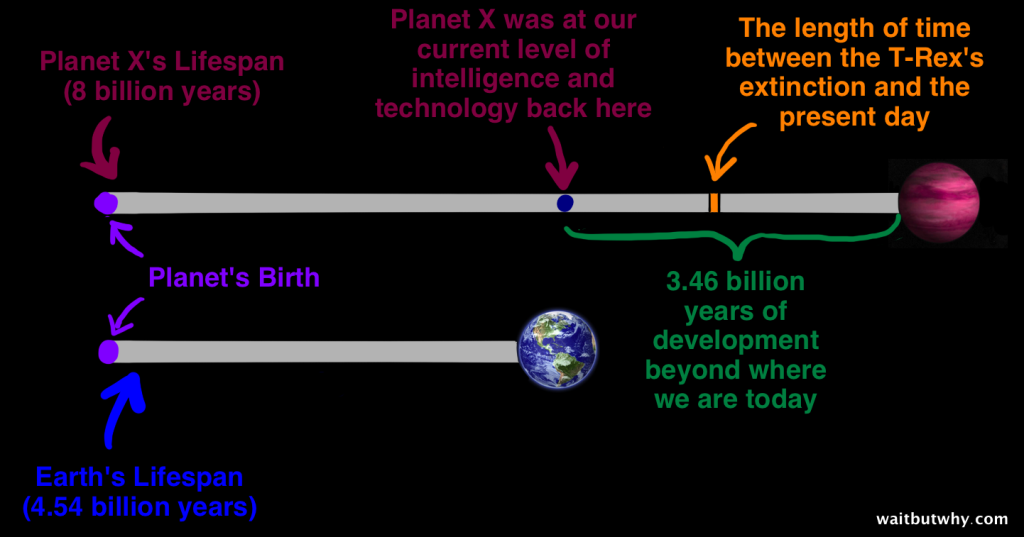This is my first blog post. I’m excited to get to work this semester!

This is a picture of my brother (left) and I at a Patriots playoff game against the Titans; the recap of the game can be found on ESPN.
This is my first blog post. I’m excited to get to work this semester!

This is a picture of my brother (left) and I at a Patriots playoff game against the Titans; the recap of the game can be found on ESPN.
In 2001, right near the world’s largest radio telescope in England, a strange phenomenon was observed. The crops near the telescope formed into an interesting formation:

This formation from above convincingly resembled a face. Scientists were baffled, and what’s even more interesting is what came next. so in 1974, Carl Sagan sent out the Arecibo Message, which was a coded message meant to talk to aliens and tell them about us. We described where we live, what we are made of, our calculation system, chemical substances on earth, and what a human looks like. Long after this, in 2001, we saw a strikingly similar pattern left in a field. Here is a picture comparing the two

The ‘message’/pattern we received seemingly came from an extraterrestrial civilization in response to our message. If the pattern really did come from aliens, they would be telling us that they also use a decimal system, that their life forms are silicon-based instead of carbon, are about 4 feet tall with large heads, and that they inhabit 3 planets in their solar system. They also described their much more complex radio telescope technology. Do you think this is really from another civilization? If not, what is it?

Europa, Jupiter’s 4th largest and 2nd closest Galilean moon, is thought to have a large saltwater ocean covered by a layer of ice. An article from Nasa details the evidence for the existence of this ocean. The first piece of evidence is the matching zig-zagging cracks on the surface that indicate that the surface was split and a “dark icy material” flowed up to the surface. The second piece of evidence is the lack of impact craters indicating a lot of surface activity. Scientists modeled the fractures on the surface and found that they fit much better if the outer layer of ice could move freely and independently from the underlying layers of the planet. Finally, the most compelling piece of evidence is that Europa has magnetic effects that imply that there is a large saltwater ocean on the planet acting as an inductor.
The article also goes on to talk about a possible future mission – Europa Clipper. This mission is set to launch October 2024 and would set out to send a probe to investigate Europa further to see if it has habitable conditions for life.

Fermi’s paradox is that based on the number of stars in our galaxy and estimates on the likelihood of intelligent, space-faring civilizations to develop in a star system, we should expect to see some signs of alien life in our galaxy. Some possible solutions to the paradox are that
According to the textbook, some of the possible explanations for scenario two are that interstellar travel is too hard or expensive, there is little desire to explore the galaxy for other civilizations, or that all other civilizations have destroyed themselves before they get the chance to explore the galaxy.
Another interesting solution exists to Fermi’s Paradox – The dark forest theory. The idea of the dark forest is that there are many civilizations out there, but they do not want to reveal themselves. Any civilization that reveals itself to the greater galaxy, could be targeted and wiped out by another civilization. The reasoning to wipe out an alien world would be to take care of the threat before they have the chance to take you out. Often in human history, when two different groups of people make first contact, this leads to war and the wiping out of one population, and other intelligent alien civilizations may have similar histories. The dark forest theory gets its name from the image of a dark forest at night with many different species who stay hidden in order to survive.
I think the dark forest idea is the most interesting and should make us question how much broadcasting we are doing to the outside world and whether or not that’s a good idea.

All good things must come to an end, including the ancient (at least relative to humanity), life-giving star we see each day. Even though the sun is considered a young star, it still has a finite lifetime, and it will eventually “die” in about 5 billion years. The image above shows a rough timeline of what this life cycle looks like, and for the purpose of this blog, we are considering the transition to the red giant phase the death of the sun. This is the point that the sun runs out of hydrogen to fuse in the core. This loss of fusion disrupts the balance between the inward force of gravity and the outward force of pressure that keeps the sun stable. The core will begin to collapse under gravity, and the outer layers of the sun will expand.

These outer layers will envelop Mercury, Venus, and probably Earth too. If our home is not completely vaporized, it will be uninhabitable from the intense heat and radiation. The sun’s outer layers would expand about to about 100 million miles (170 million kilometers or about 1 astronomical unit: the distance from the sun to the Earth). Hopefully by then, if humans are still around, we will be long gone in another planetary system (or at least to the moons of Jupiter and Saturn).

This class opened my eyes to some really cool astronomy subjects. Astronomy is a subject that I never really got the chance to study in grade school. Since coming to college, and learning more about our universe, my perspective on life has changed. Learning about how vast our universe is, how our solar system formed, how it’s growing, and the uniqueness of the different objects of our solar system has increased my interest in the subject.
I especially liked learning about Pluto in this class. I remember when Pluto was demoted from being a planet. I was in second grade, in my teacher’s space themed classroom, and we had a funeral for Pluto. RIP.
Another cool thing we learned that definitely shifted my perspective on life was the cosmic calendar. Large amounts of time are hard to conceptualize and this made it very clear to me humanity’s lifespan scale to the universe’s lifetime. Furthermore, the idea of looking back in time as you look through a telescope in the night sky is crazy to me. It makes a lot of sense, but I never would have known that before. Overall, this class introduced me to a lot of interesting topics that gave me a new perspective on the universe and our place in it.

Over the course of four months, I have learned not just about our solar system, the Milky Way, and the universe at large, but also about the process of science, the history of astronomy, and humanity’s never ending (and really just beginning) quest to find companionship in the cosmos. Before I took this course, I had a decent understanding of the underlying physics describing the structure of the solar system, but I had no idea how large a role the other life sciences play in the understanding of extraterrestrial worlds. In this class, I learned about meteorology, geology, archeology, chemistry, and biology… just to name a few! In this course, I had the opportunity to augment my understanding of several topics that previously interested me (e.g., orbital mechanics and the nature of light), and I also encountered several concepts that confused me and galvanized me to rethink my existing perceptions. As an example, I previously believed that extraterrestrial life must exist outside of the Milky Way, and certainly outside of our solar system. In this class I learned that not only could extraterrestrial life exist within our own solar system (likely on Jovian moons or possibly Pluto), but that life almost definitely exists somewhere in our Milky Way Galaxy.
I will leave this class with a fundamental background in astronomy that will facilitate my understanding of astronomical books and news articles. This upcoming literature will undoubtedly enhance the way that humans perceive the universe. I will also leave this class with a greater desire to understand the complexities of our solar system, and a stronger will to learn about concepts that assist in this goal – who knew meteorology/climate science was so essential to understanding our solar system. I am leaving college in a few days, but the knowledge and curiosity that I have gained from this class will stick with me for a lifetime to come.

The Fermi Paradox is the conflict between the lack of evidence of extraterrestrial life and high estimates for its existence. The main explanation people have come up with for this paradox is that intelligent life is rare. Using this explanation, it makes sense why there would be many places with rudimentary life, but without intelligent life that could communicate beyond their environment. Another explanation often used is that intelligent civilizations have a relatively short lifespan. This is also an explanation that could make sense. Considering the state of our world today, and how we are very capable of destroying the planet’s capability to maintain life, this explanation also seems valid. Furthermore, based on the lifetime and surroundings of a planet with life, major events could happen that would wipe out civilizations. Finally, the last major explanation is that for whatever reason we see no evidence that there is extraterrestrial life. This reason cites that communication with other intelligent civilizations could be dangerous, improper tools, Earth being deliberately avoided/isolated, and that alien life is already present but unrecognized on our planet.
Personally, I see a combination of these reasons as the ultimate explanation for the Fermi Paradox. I also think it is very interesting to consider some of the alternatives (alien life already being present, Earth being deliberately avoided, etc.). What do you think? Which explanation(s) make the most sense or are the most interesting to you?

Throughout this semester, I have learned so many new and fascinating things about our solar system and astronomy as a whole. Whether it be learning more about the fathers of Astronomy such as Copernicus or Galileo or mind-boggling concepts such as gravity, I now understand that I have only scratched the surface of understanding the secrets of our cosmos. Going back to the very beginning, by far the most interesting topic to me has the concept of time in relation to the universe. The way my perception of time has now forever changed is an understatement. For example, in the cosmic calendar, the amount of time humans have been on this Earth would be less than one hour on the final day of the final year is such a wild thing to realize when dealing with the universe. Moreover, the idea of peering back in time when you look through a telescope is the most fascinating idea to me. When you look at the sun for example, since it takes roughly 8 minutes for its light to reach your eye you are actually only seeing a past version of it. Even more crazy any time you stare down at your own feet, there is still a slight delay, even if it is infinitesimal, that you can technically only see a past version of yourself as well. All of these concepts in relation to time are what make me enjoy studying the universe around me so much and are what keeps me hungry to learn more going forward!
The Fermi paradox is the conflict between the lack of evidence for extraterrestrials and the high estimates for their existence .
The name came from the Italian-American Physicist Enrico Fermi.
He was roughly quoted as saying “Where is everybody?”
This paradox has been explained by saying that the number of intelligent civilizations is very low. Also that they can vary over the time of the universes existence so there is little chance that they would interact.

This paradox stems from the drake equation.
The chain of reason uses the idea that the sun is not special. There is a high chance that there are other planets in the habitable range.Many of these planets and stars are likely older than Earth.They have likely developed intelligent life before Earth.Some have likely developed interstellar travel.It is likely that the other civilizations have already developed this and have visited Earth.